We’re seeing a seismic shift in the B-segment hatchback market in Malaysia. All-conquering Perodua Myvi aside, the Honda Jazz had been the undisputed champion on the non-national side ever since it arrived in 2003 as a fully-imported curio, the spotlight having been taken up by the cheaper and more traditional Toyota Vios and Honda City sedans.
Buyers loved the funky tallboy looks and the cavernous interior they afforded, and while prices were fairly steep (they got quite a bit cheaper when CKD local assembly began in 2012), it found a fair few fans. Toyota tried to fight the Jazz twice with the Yaris, first with the similarly tall second-generation model in 2006 and then the lower-slung Thai version in 2014 – both coming off second-best and quickly discontinued.
Then, out of nowhere, came the third-generation Myvi. Almost immediately, Malaysians realised what they wanted wasn’t a gangly-looking hatch; they wanted something sleeker, sportier, more in tune with their growing aspirations. There were implications further up the food chain – Toyota reintroduced the Thai Yaris in 2019 (mercifully in CKD form) and while it didn’t sell as well as the Vios, it didn’t flop either. It is now Honda that’s playing catchup, unceremoniously dropping the Jazz in favour of the forthcoming City Hatchback.
Onwards, then, to the facelifted Yaris, armed with a sharp new face and a smattering of new safety features. As the de facto leader of the B-segment pack (by virtue of being the only one currently on sale), can it build on this newfound momentum? We spend a few days with one to find out.
Built to suit regional tastes, competitively priced
The fragmentation of the Yaris is bordering on the ridiculous. At one point, Toyota was selling three completely unrelated versions with the same badge – the “proper” TNGA-based model in Japan, Europe and Australasia (on which the hot GR Yaris is based), a now-discontinued rebadged Mazda 2 in North America and the cheaper-to-build Southeast Asian car you see here, also sold in China and South America.
Utilising the no-frills Vios as its base does mean that our Yaris is relatively affordable, being a useful few thousand ringgit cheaper than its booted sibling. Our top-spec 1.5G (it is kinda ours in a way, given that this unit belongs to a colleague; UMW Toyota Motor did not have a test car on hand) is priced at RM84,808, which is slightly lower than the equivalent City 1.5 V and far less expensive than the Nissan Almera VLT.
Prices have crept up quite a bit with the facelift, however, to the tune of more than RM3,000 over the outgoing 1.5G. But the increase seems fair considering what you get in return – particularly on the safety front.
Far better-looking face – no more hideous grin!
Those extra ringgit also buy you a nuanced redesign that erases the single most controversial part of the pre-facelifted Yaris (and the Vios, for that matter) – the massive smiling lower grille. The downturned maw of the new model is similarly humongous but it not only flows better with the rest of the car but also gives it a far sportier look – something that buyers here will love.


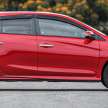
Pair that with the new standard-fit LED headlights and the result is arguably one of the best-looking front ends Toyota has come up with in recent years (most models from the current era feature bold designs, but I wouldn’t call them handsome). The rest of the Yaris is unchanged, so the sweeping roofline, rising beltline, blacked-out C-pillars, broad two-piece taillights and 16-inch eight-spoke alloy wheels remain.
The new face also goes well with the bodykit, which is supposedly optional but has been fitted to seemingly every Yaris and Vios I’ve seen on the road (it came as standard on our colleague’s car). The whole kit, including the revised front spoiler, is painted in body colour instead of black and red on the outgoing model, resulting in a much more cohesive aesthetic.
Unchanged interior betrays its age
While the exterior design has been given a shot in the arm, the interior has been left alone. While certainly functional, it looks and feels dated, consisting mostly of hard plastics. The rest of the class has moved on both in terms of design and the materials used, even though the Toyota’s general fit and finish is hard to fault. A new Daihatsu-based model is reportedly due next year, replete with a hybrid powertrain no less; it better have a wholesale cabin refresh to match current tastes.
I’ve also discovered a fair few usability quirks, which I’ve detailed in the Vios GR Sport review. Suffice to say, they can get quite annoying in daily use, and while they certainly won’t be bad enough to put you off – especially if this is your first car – it’s still something you should keep in mind when test driving the Yaris.
Still, this is by and large an agreeable cabin, filled with all the conveniences you could possibly want at this price – even though its rivals have larger screens and greater storage space. Compared to the Vios, the Yaris gets sportier-looking black headlining and blue stitching but loses out on leather upholstery on the range-topper – an acceptable trade-off given the savings in price.
The five-door also offers ample room for passengers (unlike the Vios, the sloping roof of which eats into headroom), and while Toyota doesn’t quote an official boot space figure, the load bay is plenty big enough for your weekly shopping. Do be warned if you’re planning on fitting larger items, however, as the rear seats do not fold flush with the boot floor.
Generous safety kit for the price
As for safety, the Yaris and Vios are the only models in its class to come with seven airbags as standard, along with stability control that is de rigueur in this market. They are also available with autonomous emergency braking, lane departure warning and blind spot monitoring.
The range of driver assistance systems is not as broad as you’d find in some of the competition, but the Toyotas benefit by having them fitted on all but the base 1.5J variants – as opposed to being limited to the top-spec models in the case of the City and Proton X50, both of which top out north of RM100,000.


Smooth powertrain, but lacks oomph
The Yaris retains the powertrain introduced on the Vios in 2016 – a 1.5 litre Dual VVT-i four-cylinder engine making 107 PS at 6,000 rpm and 140 Nm of torque at 4,200 rpm, mated to a CVT. The modest numbers don’t make for such good reading, especially next to the car’s punchier rivals.
Even so, the buttery-smooth 2NR-FE mill does a commendable job motivating the 1,140 kg hatch, thanks to a decent amount of mid-range torque. The Toyota keeps up with city traffic and gets up to highway speeds with relative ease, although it does struggle a bit when you ask for more, such as on a steep hill.
Helping its cause is the stepless transmission, which was retuned in 2019 and responds quickly to throttle inputs, helping to mask the shortfall in power; only on occasion will it hesitate when you put your foot down. The engine is also fairly muted even when fully extended, making for a more relaxed driving experience.
Refined ride, slow steering
Noise levels are also low elsewhere, with the acoustic glass windscreen isolating much of the wind rushing over it at speed. Tyre roar could be a little lower, however, although the Toyo Proxes R50s on this car are considerably less noisy than the more hardcore performance rubber on the GR Sport.
The Yaris also impresses with its cushy ride, which absorbs the litany of speed bumps and potholes on our roads yet retains enough composure to iron out larger undulations. The upshot is that the car rolls a bit in the corners, but that’s perfectly acceptable for a daily driver.
Ultimately, it’s the slow steering that saps out the fun in throwing the Yaris around the bends. Grip levels are also just OK, which not only leads to understeer at the limit but also makes the car somewhat susceptible to crosswinds at higher speeds – an issue exacerbated by the imprecise tiller.
Verdict: A comfortable and practical family car, warts and all
Minor niggles aside, the Yaris accomplishes everything that is expected of it. As a utilitarian but slightly sporty-looking B-segment hatchback, it does what it says on the tin and nothing more. It may sound like I’m damning it with faint praise, but there’s something to be said about being able to read where the market is heading towards and Toyota has absolutely nailed it here.
As much as some of us would love to see the Japanese-market Yaris here (and the new fourth-generation Jazz, for that matter), Malaysians simply aren’t ready for that level of complexity – and higher prices. They also want something that looks meaner and sportier than what’s under the bonnet, for better or worse, and those vehicles just aren’t built for that.
On that front, the Yaris delivers on the things that matter to buyers here in 2021. It looks great, offers a surprisingly plush ride and is decently well-equipped. Throw in the competitive pricing, the new safety features and Toyota’s enviable reputation for bombproof reliability and you have yourselves a winner.
The facelifted Toyota Yaris is priced from RM70,940 to RM84,808 on-the-road without insurance, inclusive of the sales and service tax (SST) exemption valid until December 31, 2021. A five-year, unlimited-mileage warranty is included. Browse full specifications and equipment on CarBase.my.












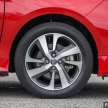


























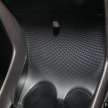






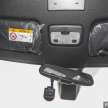




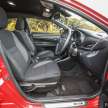






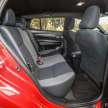





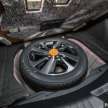
The post REVIEW: 2021 Toyota Yaris 1.5G in Malaysia – RM85k appeared first on Paul Tan's Automotive News.

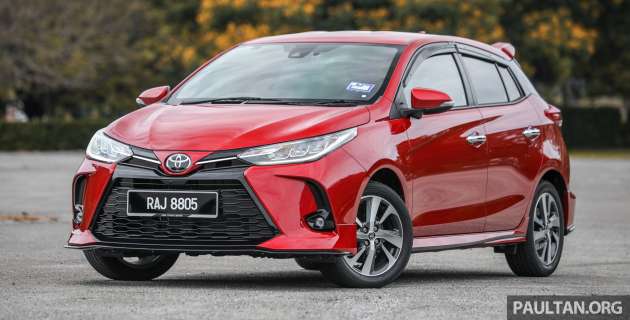
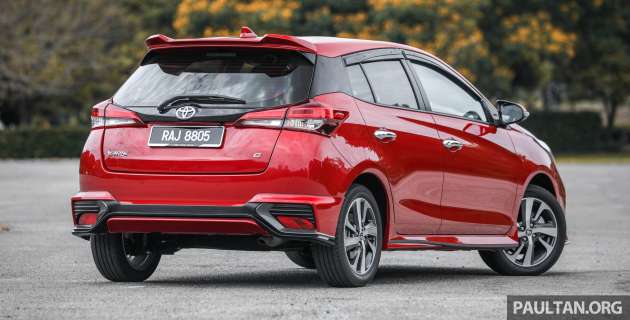


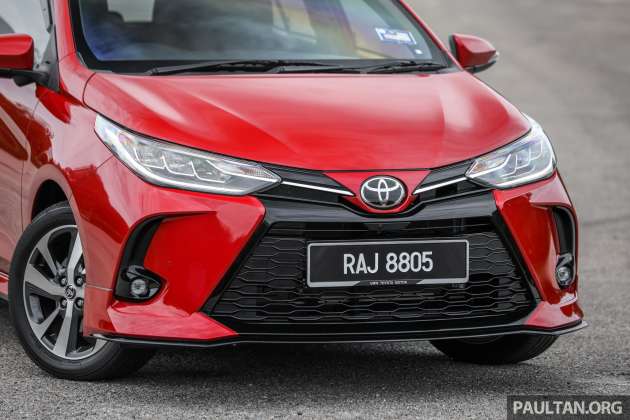
0 Comments